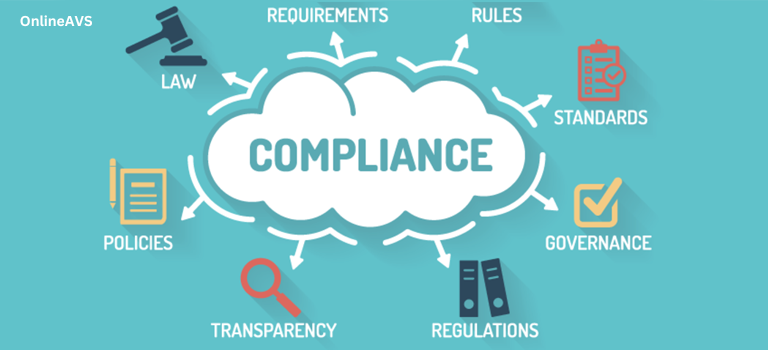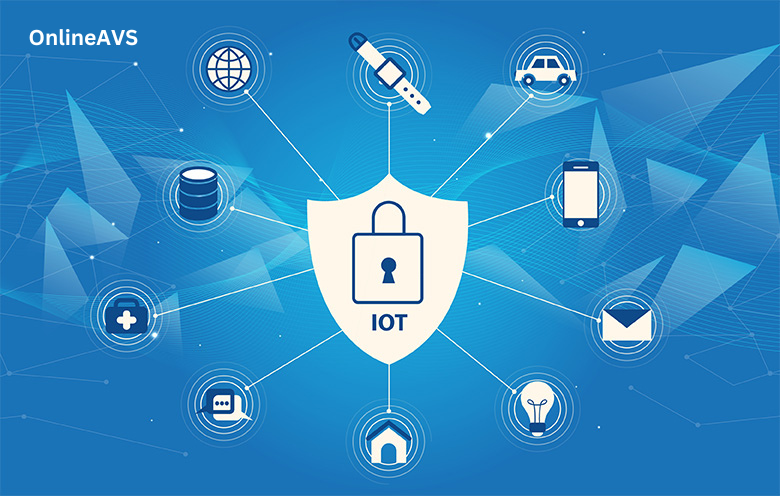Intro – what are the advantages of installing antivirus software on Digital Devices
The main advantage of installing antivirus Cyber Security Software on digital devices is to protect them from viruses and other types of malware. Malware is malicious software that can damage or disable your device, steal your data, or track your online activity. Antivirus software or cyber security software can detect and remove malware, and prevent it from infecting your device in the first place.
Here are some of the specific benefits of installing antivirus software :
1- Protects your data and files – Antivirus security software or cyber security software can prevent malware thing from corrupting or deleting your important files, such as documents, photos, and music.
2- Prevents identity theft – Antivirus cyber security software can help to protect your personal information, such as your name, billing address, credit card number, and Social Security number, or other financial information from being stolen by malware.
3- Blocks spam and phishing emails. Cyber security software or Antivirus software can help to block or prevent spam and phishing emails, which can inject malware or links to malicious websites.
4- Protects your device from network attacks – Cyber security software or Antivirus security software can help to protect your device from network attacks, such as denial-of-service attacks and man-in-the-middle attacks.
5- Enhances productivity – Cyber security software can help to improve employee productivity by reducing the time they spend dealing with cyber security issues, such as malware infections and phishing attacks.
In addition to these general benefits, cyber security software can also provide a number of specific benefits, depending on the type of software used. For example, antivirus software can protect your computer from viruses and other malware, while firewall software can protect your network from unauthorized access. Here are some benefits of using cyber security software.
Benefits of Using Cyber Security Software
- Improved Data security
- Threat Detection
- Vulnerability Assessment
- Incident Response
- Better Compliance Management
- Protection of IoT Devices
- Firewall Protection
Improved Data security

Improved data security is the process of implementing and maintaining measures to protect data from unauthorized access, use, disclosure, disruption, modification, or destruction. It is an ongoing process that requires continuous monitoring and improvement to keep up with the evolving threat landscape.
There are many different ways to improve data security, but some common best practices include
Encrypting data Encryption is the process of converting data into a format that can only be read by those who have the decryption key. This can be done for data at rest (stored on devices or in the cloud) or data in transit (being transmitted over a network).
Using strong Watchwords and multi-factor authentication( MFA) – Strong watchwords and MFA are essential for guarding stoner accounts against unauthorized access. MFA adds a redundant subcaste of protection by taking junkies to access a law from their phone or another device in addition to their word.
Implementing security awareness training – Employees should be trained on how to identify and avoid common cyber threats, such as phishing attacks and social engineering scams using cyber security software.
Be careful about what information you share online. Only share your personal information or data with trusted websites and individuals whom you recognize. you can also use a firewall and cyber security software or antivirus security software on all of your devices or be cautious about opening email attachments and clicking on links from unknown senders. if you face such an issue then cyber security software or antivirus security software will help you be safe when you are online.
Threat Detection

Threat detection is the process of identifying malicious activity or potential threats to an organization’s IT infrastructure, systems, and data. It is a critical component of any cyber security software program, as it helps organizations identify and respond to threats before they cause damage.
There are a variety of different threat detection methods and tools that can be used, depending on the specific needs of the organization. Some common methods include:
- Signature-based detection – This method uses known signatures of known malware and other threats to identify malicious activity.
- Heuristic detection – This method uses heuristics, or rules of thumb, to identify suspicious or unusual activity on your device.
- Threat intelligence – This method uses information from external sources, such as security researchers and government agencies, to identify new and emerging threats.
Threat detection tools can be deployed at a variety of different points in an organization’s IT environment, such as on endpoints, networks, and servers. They can also be deployed on-premises or in the cloud. Once a threat has been detected, it is important to have a plan in place to respond to it. This plan should include steps to contain the threat, mitigate the damage, and prevent it from happening again. Effective threat detection is essential for organizations of all sizes. By identifying and responding to threats early, organizations can reduce the risk of damage to their systems and data, and protect their reputation.
Vulnerability Assessment

Vulnerability assessment is the process of identifying, classifying, and prioritizing security weaknesses in an information system. It is a systematic review of security controls to determine whether they are adequate to protect the system from known and emerging threats. Vulnerability assessments can be conducted on a variety of systems, including networks, hosts, applications, and cloud environments. Vulnerability assessments are typically conducted using a combination of automated and manual techniques. Automated tools can be used to scan systems for known vulnerabilities, while manual assessments involve security analysts reviewing systems for potential vulnerabilities that may not be detected by automated tools this is the reason it comes under the best security software.
Here are some of the benefits of using vulnerability assessments
- Reduce the risk of cyberattacks
- Improve the overall security posture of the organization
- Save money on remediation costs by identifying and fixing vulnerabilities early in your devices
If you are responsible for the security of an information system, I recommend that you conduct vulnerability assessments on a regular basis. This will help you to identify and remediate security weaknesses before they can be exploited by attackers.
Incident Response

Incident response (IR) is a set of procedures and technologies that a company/organization uses to detect, respond to, and recover from cybersecurity incidents using the best cyber security software. The goal of IR is to minimize the damage and disruption caused by an incident and to bring the organization back to normal operations as quickly as possible.
The IR process typically includes the following steps which are:
- Preparation – This involves developing an incident response plan, training staff on the plan, and implementing the necessary security tools and technologies.
- Detection and analysis – This helps identify and investigate potential security incidents on your digital devices.
- Recovery – This involves restoring the organization/company systems and data to their original state.
IR is important for all organizations/companies regardless of size or industry. Cyberattacks are becoming more sophisticated and frequent every day, and even the best cyber security software defenses can be breached. By having a well-developed IR plan in place, organizations can minimize the impact of an incident and get back to business as quickly as possible
Some examples of incident response activities are:
- Investigating security alerts and events
- Identifying and analyzing malware
- Removing malware and other threats also restoring system data
Better Compliance Management

Better compliance management is a proactive approach to ensuring that an organization matches all applicable laws, regulations, governance, transparency, and internal policies. It involves identifying and assessing compliance risks, implementing and maintaining effective compliance controls, and monitoring and reporting on compliance performance. Better compliance management goes beyond simply meeting the minimum requirements. It is about embedding a culture of compliance throughout the organization and striving to continuously improve compliance practices.
Here are some key elements of better compliance management:
Proactive risk management – Organizations should regularly identify and assess compliance risks by using for best security software, taking into account their industry, size, location, and other factors. This assessment should be used to develop and implement appropriate risk mitigation strategies.
Continuous monitoring and reporting – Organizations should monitor their compliance performance on an ongoing basis and report to senior management on a regular basis. This will help to ensure that compliance risks are being managed effectively and that the organization is making progress toward its compliance goals.
Better compliance management can help organizations for :
- Reduce the risk of fines, penalties, and other enforcement actions
- Protect their reputation/image and brand
- Enhance customer trust and confidence
- Attract and retain top talent
Protection of IoT Devices

Protection of IoT devices is the practice of securing Internet of Things (IoT) devices from cyber attacks and other malicious activity by using the “Best Security Software” or cyber security software. IoT devices are any device that can connect to the internet and collect and exchange data. This includes a wide range of devices, such as smart home devices, wearables, industrial control systems, and medical devices. IoT devices are often targeted by hackers because they are often poorly secured and can provide access to sensitive data and systems. For example, a hacker could compromise a smart thermostat to gain access to a home network or a medical device to access patient data.
There are some steps that can be taken to protect IoT devices:
1- Use strong passwords and enable multi-factor authentication (MFA). Many IoT devices come with weak default passwords that are easy to guess. Change the password to each device as soon as possible and use a strong, unique password for each device. If possible, enable MFA to add an extra layer of security.
2- Keep firmware up to date. Device manufacturers regularly release firmware updates that patch security vulnerabilities. It is important to install these updates as soon as they are available on those devices.
3- Use a firewall and intrusion detection system (IDS). A firewall can help to block unauthorized access to your network, and an IDS can help to detect and alert you to suspicious activity.
4- Be careful about what apps you install on your IoT devices. Only install apps from trusted sources or authorized websites and be aware of the permissions that you are granting to apps.
5- Be careful about what information you share on social media platforms. Hackers can use social media posts to gather information about your IoT devices and how you use them.
6- Educate yourself about IoT security. There are a number of resources available online and from security experts that can teach you more about how to protect your IoT devices.
By following these steps, you can help protect your IoT devices from cyber attacks and other malicious activity online.
Firewall Protection

Firewall protection is a type of network security (also available in some Security Software or cyber security software)that monitors and controls incoming and outgoing network traffic based on predetermined security rules. A firewall works like a barrier between two networks 1- a private internal network and 2- the public Internet. It allows non-threatening traffic in and keeps dangerous traffic out of your devices. Firewall security can be implemented as hardware devices, software programs, or a combination of both. Hardware firewalls are typically installed at the edge of a network, between the network and the Internet. Software firewalls can be installed on individual computers or devices. Firewall rules can be based on a variety of factors, such as the source and destination IP addresses, the port numbers, and the type of internet traffic. For example, a firewall rule might allow all incoming web traffic on port 80, but block all incoming traffic on other ports.
Firewall protection is an important part of any network security strategy. That can help protect networks from a variety of threats, such as :
- Malware – Firewalls can block malware from entering a network or spreading from one device to another device for damage.
- Unauthorized access – Firewall security can prevent unauthorized users from accessing the network or its resources.
- Denial-of-service attacks – Firewalls can help prevent denial-of-service attacks by blocking unwanted traffic on your devices.
Firewalls are not a perfect solution to secure your devices/data, but they can be a very effective way to improve network security.
Here are some tips for using firewall protection effectively
Keep your firewall software up to date. Firewall vendors regularly release new updates to address new threats and Configure your firewall rules carefully. Only allow the traffic that you need. You have to use multiple layers of security in addition to a firewall. Other security measures, such as antivirus software and intrusion detection systems, can help protect your network from a wider range of threats.
Conclusion – Benefits of Using Cyber Security Software
Cyber security software can help to protect your data from unauthorized access, theft, and corruption. This is especially important for businesses and organizations, that store large amounts of sensitive data and cyber security software can help you to detect a wide range of cyber threats, including viruses, malware, trojans, phishing attacks, and also denial-of-service attacks. This allows you to take action to mitigate the threats before they cause damage. Overall, cyber security software is an essential tool for protecting your devices, data, and networks from cyber threats and hackers. It can help you improve your data security, detect threats, assess vulnerabilities, respond to incidents, improve compliance, protect IoT devices, and provide firewall protection.
Recommendation: I recommend that you choose the Best Security Software or cyber security software solution that is tailored to your specific needs. Consider the size of your organization, the type of data you store, and the types of cyber threats you are most likely to face. There are many different cyber security software solutions available, so you should be able to find one that is right for you.

Pingback: 10 Best Computer Security Tips to Keep Your Data Safe Online